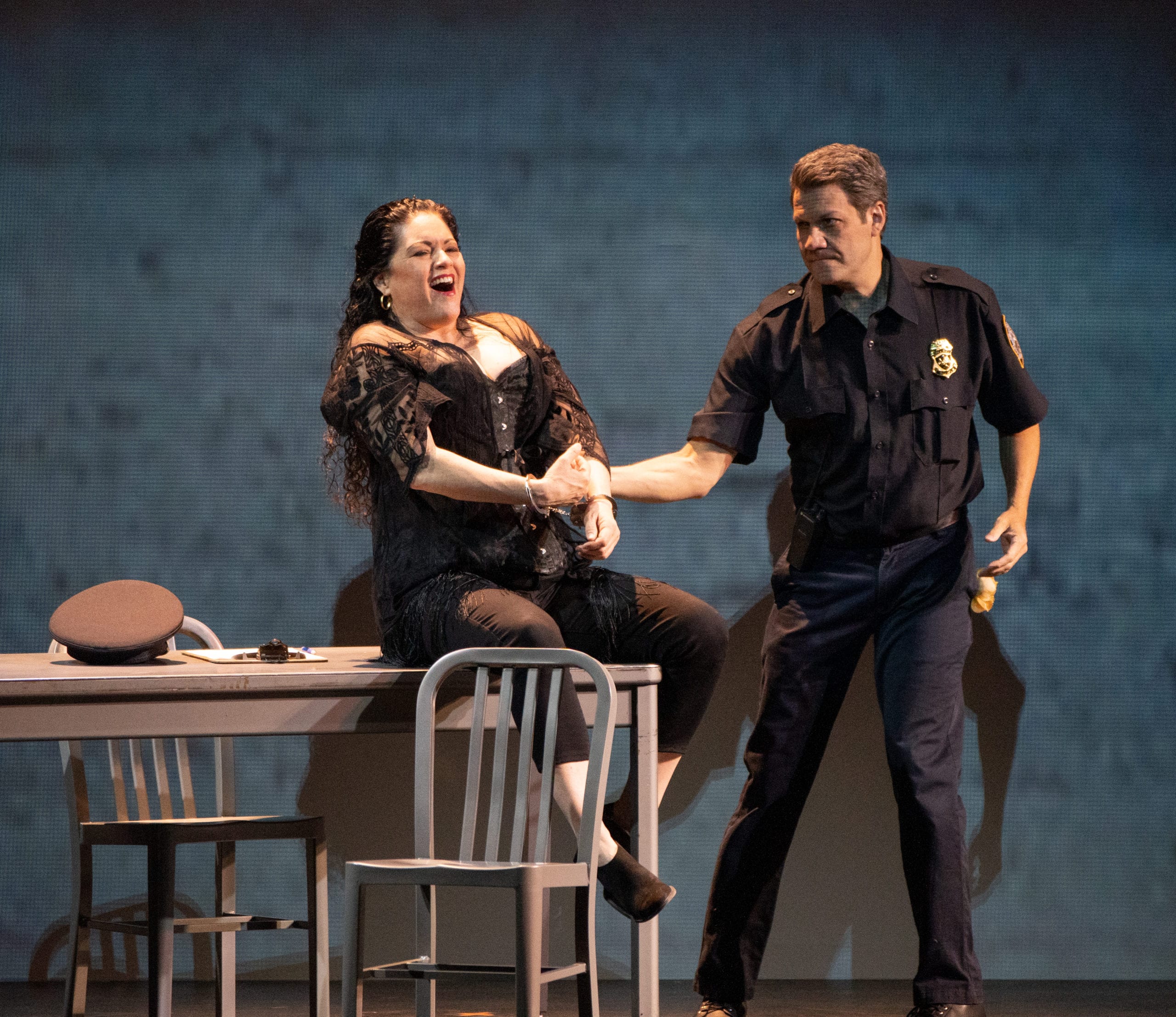SALT LAKE CITY — Peter Brook has been hailed a theatrical genius. He was influenced by the work of Antonin Artaud and his ideas for “Theatre of Cruelty,” which was seen as a break from traditional Western theatre and a means by which artists assault the senses of the audience. Encyclopedia Britannica describes “Theatre of Cruelty” as: “a primitive ceremonial experience intended to liberate the human subconscious and reveal man to himself.” Blossoming in the 1960s—and coming on the heels of the French surrealist movement—one can understand how a group of young energetic artists, Brooks among them, wanting to break from traditional theatre norms and push back against the theatrical establishment.

Given that desire to “wake us up, nerves and heart” the opera Carmen seems to fit perfectly into the Theatre of Cruelty idea of performance art. Carmen is full of brutality and abuse, on all sides. I saw the original New York production of Brook’s version at Lincoln Center in 1982, in a small, intimate theatre, where the singers were just a few feet from me. What I remember from the production was heat, sex, and brutality—three elements Utah Opera’s production of La Tragédie de Carmen does not have.
Conceived and designed for a small intimate space, the Janet Quinney Lawson Capitol Theatre is not the space for this reimagined version of Carmen. Brook eliminated many characters — and all choruses of soldiers, children, and factory workers — in order to concentrate the action on the four main characters: Carmen, Don Jose, Micaela and Escamillo. Brook also added two other characters into the story: Lilas Pastia (the saloon owner) and Garcia (Carmen’s husband), two unnecessary characters that there is no reason to care about. Georges Bizet’s major arias are maintained and dramatically rearranged for a chamber orchestra, which has been placed behind the set made of flats, which effects the clarity and sound of the brilliant Capital Theatre Chamber Orchestra.

Stage director Omer Ben Seadia set this Carmen in present day Spanish Harlem, an interesting choice, but one that falls flat. With inappropriate and confusing costumes by Verona Green, the staging consists of the main characters wandering around disconnectedly, rarely coming together and barely touching, save for a brief and awkward lap-dance and a momentary embrace or two.
In her program notes, Ms. Ben Seadia states: “In this production, we have chosen to highlight the relationship of the characters to their individual fates and to explore the balance of free will verses predetermined structure in human nature. Does fate control us, or do we have opportunities to break away and forge new paths, even if that path leads to violence or death?” This is a fascinating premise worthy of exploration, but this production never explores any of it. Ms. Ben Seadia introduces from the start, a character named Fate (played by Edith Grossman), who glides like a specter through the entire production, dressed like a character out of The Addams Family, never singing, never commenting, just milling around changing scenery and interfering with any real emotion in the show. One of those moments came after Don Jose, played wonderfully by Utahn Isaac Hurtado, sings the famous “Flower Aria” in Act II, a lovely song that moves Carmen to gently embrace Don Jose. Finally, an emotional moment the audience can hold on to . . . except Fate is drawing on the wall right next to them. It was maddening and confusing.

The actors do their best given the artistic circumstances, with Brandon Bell as Zuniga/Garcia (who, unfortunately, never sings) and Daniel O’Hearn, nicely slimy as Lillas Pastia with a nonsensical monologue video-taped and shown on the scrim at the beginning of Act II. Another standout in the cast was Julia Gershkoff as Micaela, a clear and lovely soprano who gifts to us note after note as a delicate gem. Efrain Solis as Escamillo, a street performer who somehow finds his way to perform in Madison Square Garden, was also memorable. He has a beautiful voice that’s a pleasure to hear. Both, however, are left to fend for themselves by the director. Carmen, played nicely by Kirstin Chávez, has the hardest job of all as she acts and sings up a storm in a spartan set, in difficult costumes, and with no direction at all. She does her best, given that the concept of the cut-down Carmen and the staging that prevents any emotional connection with any other character.
Carmen is a gorgeous opera, but it is a beast, with a tight production usually clocking in at three and a half hours. I fully understand why, after COVID, Utah Opera chose this massively cut-down version of Carmen to present live on stage. The decision to produce La Tragédie de Carmen makes sense, but the production just doesn’t. A new concept of a classic is always welcomed and encouraged, as long as it has a reason and as long as it brings new insight to the old and resonates with a modern audience. But a concept is just a concept if an audience does not care about the characters and what happens to them. If an audience doesn’t care, then a production is just an academic exercise, which at its core, is tedious.
[box]Peter Brook’s Le Tragédie de Carmen plays May 14 at 7:30 PM and May 16 at 2 PM at the Janet Quinney Lawson Capitol Theatre (50 West 200 South, Salt Lake City). ay 12 at 7:00 PM; Fri May 14 at 7:30 PM and Sun May 16 at 2:00 PM. Tickets are $20-99. For more information, visit utahopera.org.[/box]

